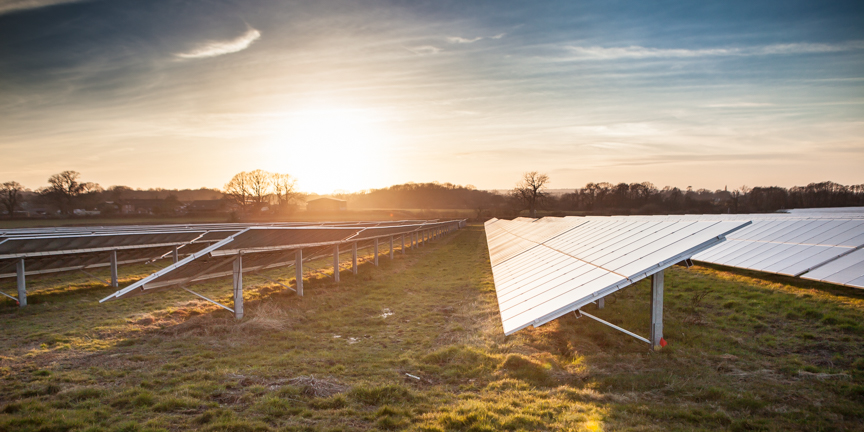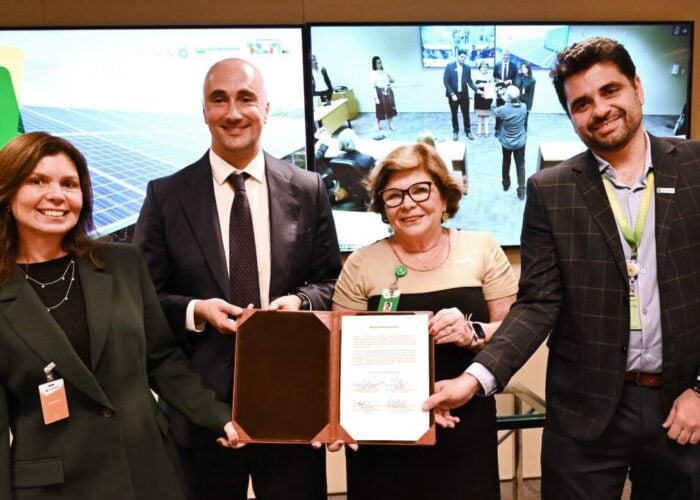
Solar will dominate the power generation alongside wind in the coming decades as electrification rapidly escalates, but the energy transition is occurring “nowhere near fast enough” to deliver change compliant with the Paris Agreement.
That is the damning verdict of DNV GL’s latest edition of its Energy Transition Outlook, which has also concluded that technological advances in solar PV, wind and battery storage can deliver a Paris-compliant future, but only if they are scaled properly.
Try Premium for just $1
- Full premium access for the first month at only $1
- Converts to an annual rate after 30 days unless cancelled
- Cancel anytime during the trial period
Premium Benefits
- Expert industry analysis and interviews
- Digital access to PV Tech Power journal
- Exclusive event discounts
Or get the full Premium subscription right away
Or continue reading this article for free
The report, published today (8 September 2020), includes the findings of technical advisory DNV GL’s independent modelling of the world’s energy system, examining the relationship between supply and demand out to 2050.
“The rapid rise of solar PV, wind and battery technologies in recent years gives me hope that humanity has solutions at hand.”
With regards the power sector, DNV GL expects electricity demand to more than double over the course of the next three decades, rising from 19% of the total global energy mix today to around 41% by 2050. This will be primarily driven by mass electrification of transport. This will be achieved in tandem with a meteoric rise of renewable power sources, with DNV GL expecting renewables to provide 78% of the world’s electricity by 2050. Just wind and solar will provide nearly two-thirds (62%) of the world’s total power demand by 2050, rising from 24% in 2030.
Solar PV deployment is expected to rapidly accelerate in particular, with capacity expected to grow 20-fold by 2050 to 10TW. It will become the dominant renewables asset class by that date, with onshore wind capacity coming in at just under half solar PV’s installed capacity base (4.9TW). Capacity factors are also expected to increase on the back of wider deployment of bifacial panels and solar trackers.
Such a high penetration of variable renewable electricity will, however, cause power markets to become more complex, with dispatchable and non-dispatchable storage sources competing on the market and a near-trebling of grid capacity – including a significant increase in ultra-high voltage lines – needed to accommodate power demand.
The impact of COVID-19
The report also includes a section detailing the impact of COVID-19, which DNV GL expects to reduce global energy demand by 8% this year. This falls broadly in line with other estimates issued earlier this year by the likes of the International Energy Agency. Energy demand is expected to pick up from next year, however this will be from a lower base and behavioural shifts sparked by the pandemic such as remote working are now forecast to have a lasting effect on energy consumption. The repercussions of the pandemic are now expected to be felt throughout the coming decades, with DNV GL forecasting that energy demand will continue to fluctuate between 6 – 8% lower than what would otherwise have been recorded without the pandemic.
While meteoric rises in renewables are expected, and indeed the onset of the COVID-19 pandemic would appear to have bought the global energy system “a little time”, the energy transition will need to significantly increase in scale if climate targets set in place by the Paris Agreement are to be reached.
“COVID-19 has changed the global energy outlook, yet the global climate crisis remains as urgent as before the pandemic,” Remi Eriksen, group president and CEO of DNV GL, said. “Early optimism about decreased air pollution has been replaced by the cold reality that it is not because of a more decarbonised energy mix but because of short term changes unique to the pandemic. We can transition faster with the technology at hand, but now more than ever before, we require national and sectorial policy incentives to bring us to the ambitions of Paris.”
“The rapid rise of solar PV, wind and battery technologies in recent years gives me hope that humanity has solutions at hand, however the so called hard to abate sectors need strong policy incentive to move the needle on decarbonisation. Decarbonised natural gas, including hydrogen, will play a key role in the transition to the energy future humanity wants and needs,” said Eriksen.






